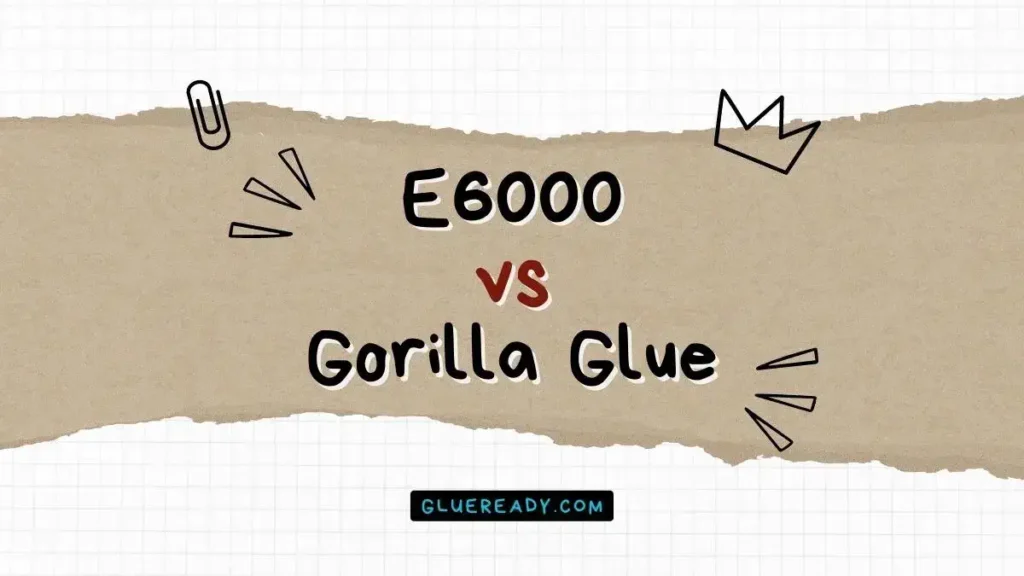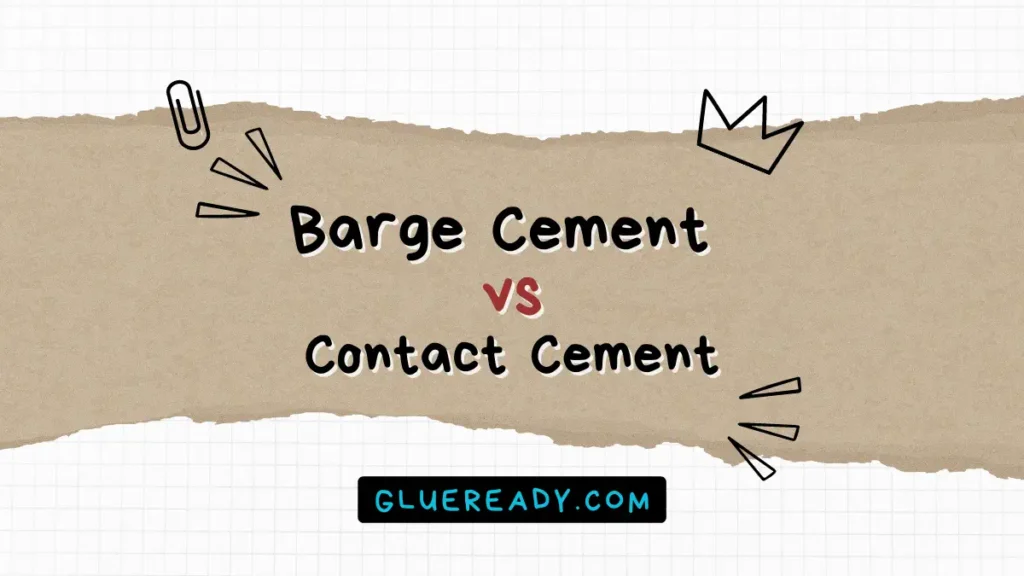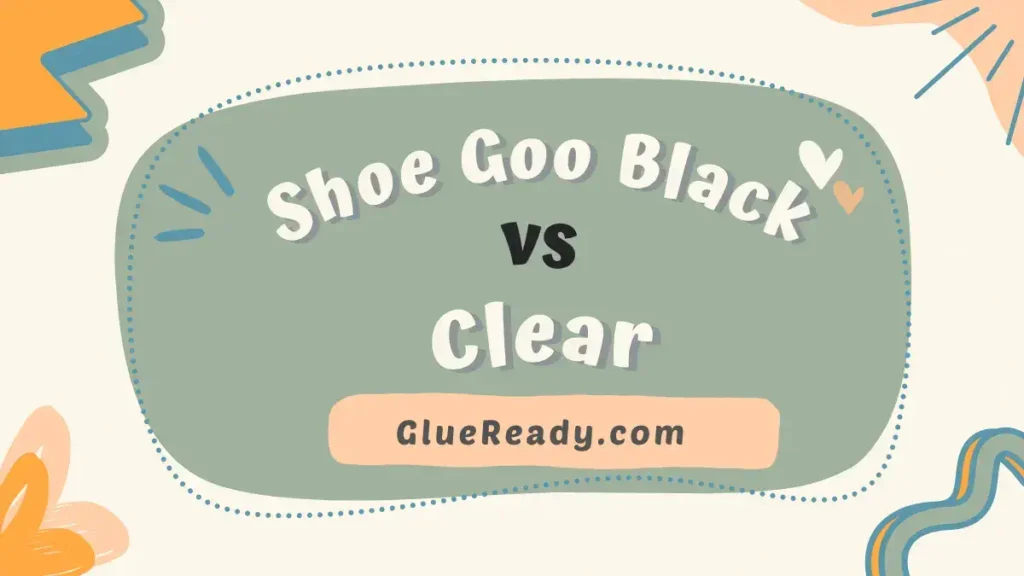E6000 vs Contact Cement | Extensive Analysis

If you are looking for a reliable and versatile adhesive for your DIY projects, you might be wondering which one to choose between E6000 and contact cement.
E6000 and contact cement are distinct kinds of glues. Both have their own strengths and weaknesses when comparing E6000 vs contact cement.
The major contrast is the speed and safety of drying. E6000 is odorless and non-toxic. It sets quicker than contact cement. However, contact cement has more elasticity than E6000.
Read More: E6000 vs JB Weld
What is E6000?
E6000 is a polyurethane glue that is suitable for many types of surfaces, such as metal, plastic, wood, glass, fabric, and more.
It has a fast-drying time of about 5 to 7 minutes and a clear and flexible finish. It does not have any odor or toxicity, making it easy and safe to work with.
E6000 is also water-resistant and can withstand high temperatures.

What is Contact Cement?
Contact cement is an adhesive that comes from polychloroprene, and that’s mostly natural rubber.
It is capable of bonding a variety of materials, including fabrics, rubbers, plastics, laminates, and non-porous materials.
It has a longer drying time of about 15 to 30 minutes and a flexible and waterproof finish.
Contact cement works by applying two coats on each surface and letting them dry before joining them together. It creates an instant and permanent bond that cannot be repositioned.

E6000 vs Contact Cement Comparison Table
| Property | E6000 Adhesive | Contact Cement |
| Type of adhesive | Polyurethane glue | Polychloroprene (natural rubber) |
| Odor | No odor | Flammable |
| Drying | Fast | Slow |
| Curing | Slow-curing | Instant-bonding |
| Flexibility | Less flexible than contact cement | Highly flexible |
| Toxicity | None | Flammable and odorous |
| Finish | Clear and flexible | Flexible and waterproof |
| Compatible materials | Metal, plastic, wood, glass, fabric, etc. | Plastics, rubbers, fabrics, laminates, non-porous materials, etc. |
Which One to Choose Between E6000 and Contact Cement?
Both E6000 and contact cement are effective adhesives that can be used for a wide range of projects. Here, I will show you a comparison between E6000 and Contact Cement.
Compatibility
E6000 and contact cement can both adhere to a variety of surfaces, but they have some limitations.
E6000 is a polyurethane glue that can bond to metal, wood, glass, ceramic, leather, fabric, rubber, plastic, and more.
However, it should not be used on polystyrene, polyethylene, or polypropylene plastics, as it may not stick well to them.
Contact cement is a rubber-based glue that can bond to plastic, rubber, wood, leather, metal, laminate, fabric, and more.
However, it is not suitable for porous materials, such as paper or cardboard, as it may soak through them.
Drying Time
It is also important to consider how long the adhesive will take to dry. E6000 and contact cement have different drying times and methods.
E6000 is a fast-drying glue that only needs 5-7 minutes to set in place. However, it takes 24-72 hours to cure completely.
To use E6000, you need to apply a thin layer of glue to one surface and press it firmly to the other surface. You can adjust the position of the pieces within 5 minutes before the glue sets.
Contact cement is a slow-drying glue that needs 15-30 minutes to dry before bonding. However, it creates an instant and permanent bond once the two surfaces are pressed together.
To use contact cement, you need to apply a thin coat of glue to both surfaces and let them dry until they are tacky. Then you need to align the pieces carefully and press them firmly together.
Toxicity
E6000 and contact cement have different levels of toxicity and odor.
E6000 is a low-toxicity glue that does not have any harmful odor. It is water-based and has low V.O.C., which means it has low volatile organic compounds that can affect the air quality. E6000 is safe to use indoors and outdoors.

Contact cement is a high-toxicity glue that has a strong and flammable odor. It contains solvents that can irritate the eyes, skin, and respiratory system.
Contact cement should be used in a well-ventilated area and away from any heat sources or flames.
Strength
E6000 and contact cement have different levels of strength and flexibility.
E6000 is a strong glue that can withstand high temperatures, water exposure, and impact.
It also has some flexibility that allows it to absorb shock and vibration. E6000 is ideal for repairs and crafts that require durability and resilience.
Contact cement is a flexible glue that can bend and stretch with the materials. It also has some resistance to water and heat.
Contact cement is ideal for projects that require flexibility and conformability.
Read More: B7000 vs B8000
Frequently Asked Questions (FAQs)
Is E6000 Better Than JB Weld?
E6000 and JB Weld are both popular adhesives, but they have different strengths and are used for different purposes.
What Is a Substitute for Contact Cement?
There are several alternatives to contact cement, including double-sided tape, super glue, epoxy, traditional hide glue, water-based contact cement, and hot glue.
What Is the Strongest Contact Adhesive?
Loctite PL Fast Grab Premium is one of the most powerful construction adhesives tested, which supported 115 pounds on a wood block and 92 pounds on a PVC block.
What Does Contact Cement Not Stick To?
Contact cement usually fails to bond with materials that have poor adhesion, such as plastics, materials with shiny surfaces, fabrics, or materials with a wax layer. It also usually does not adhere to materials that are powder-coated or have silicone-based lubricants.
Final Thoughts
Both E6000 and contact cement are excellent glues for different purposes.
E6000 is a fast-drying, low-toxicity, strong glue that can bond to many materials. Contact cement is a slow-drying, high-toxicity, flexible glue that can bond to non-porous materials.
The best one to choose depends on your personal preference and the specific requirements of your project.
Hopefully, this comparison between E6000 vs contact cement will help you in that matter.






